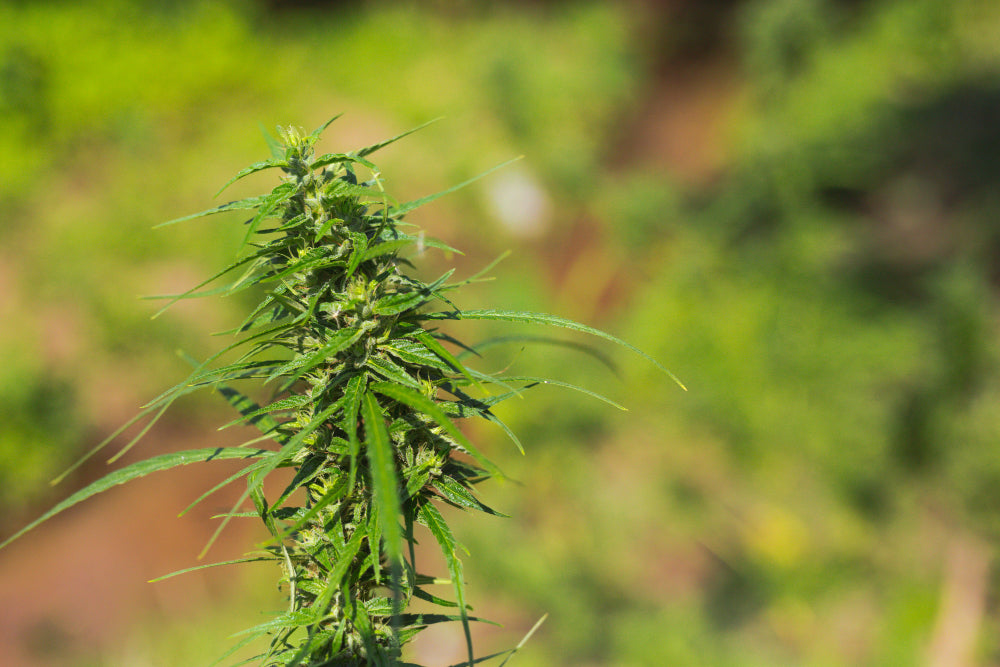HHC Alternatives: Future of Cannabinoids

The world of cannabinoids is constantly evolving, and with new discoveries come new opportunities. HHC (hexahydrocannabinol) is one of those exciting developments that is catching the attention of many. In this blog post, however, we want to focus not only on HHC, but also on the various alternatives that have the potential to shape the future of cannabinoids. We will look at the basics of these alternatives, highlight their benefits, and compare how they stack up against more well-known cannabinoids like delta-8 THC and CBD.
What is HHC?
HHC is a relatively new cannabinoid derived from the hemp plant. It offers similar psychoactive effects to THC, but in a slightly milder form. HHC has piqued the interest of many because it exists in some legal grey areas and thus can offer an alternative to THC in regions where THC is banned.
Why this blog post?
This blog post aims to introduce the various alternatives to HHC and explore how these new cannabinoids could impact the future of the industry. With increasing interest and research in this area, it is important to be informed of the latest developments and understand the potential benefits and differences of the various cannabinoids.
Basics of HHC alternatives and their benefits
To fully understand the various HHC alternatives, it is important to know the basics. The chemistry behind these compounds and their unique properties play a crucial role in how they are used and the benefits they provide.
The chemistry behind HHC alternatives
The chemistry behind HHC alternatives like Delta-8-THC and CBD is fascinating. Delta-8-THC is a less psychoactive form of THC, while CBD has no psychoactive effects at all. Both compounds are derived from the hemp plant, but are processed in different ways to accentuate their unique properties.
Comparison: HHC, Delta-8-THC and CBD
When we compare HHC, Delta-8-THC and CBD, we see clear differences in their effects and uses. While HHC and Delta-8-THC have mild psychoactive effects, CBD is known for its therapeutic benefits without the high. This comparison helps to understand the different uses and benefits of each cannabinoid and to find out which one best suits individual needs.
In the following sections, we'll dive deeper into the most popular HHC alternatives and explore their specific properties and uses. Stay tuned to learn more about Delta-8 THC, CBD, and other promising cannabinoids.
Popular HHC alternatives: Delta-8-THC and CBD
In addition to HHC, there are two other cannabinoids that are gaining popularity: Delta-8-THC and CBD. Both have unique properties and offer various benefits that make them attractive alternatives to HHC. In this section, we will take a closer look at the specific properties and benefits of Delta-8-THC and CBD.
Delta-8-THC: Properties and Benefits
Delta-8-THC is a cannabinoid derived from the hemp plant and is chemically closely related to delta-9-THC, the main active ingredient in cannabis. Delta-8-THC offers a milder psychoactive effect than delta-9-THC, making it attractive to people who want to enjoy the positive effects of THC without the intense psychoactive experience. The benefits of delta-8-THC include relieving anxiety, reducing pain, and promoting relaxation and well-being. Due to its mild effects and its legal availability in many regions where delta-9-THC is banned, delta-8-THC is gaining popularity.
CBD: Benefits and Applications
CBD (cannabidiol) is one of the most well-known cannabinoids and has gained a lot of attention due to its numerous health benefits without psychoactive effects. CBD is widely used to relieve pain, anxiety and inflammation and also has applications in skin care and dietary supplements. The main benefits of CBD include its versatility and ability to promote general well-being without causing psychoactive side effects. Its wide acceptance and variety of uses make CBD one of the most popular alternatives to HHC.
Other promising cannabinoids: CBG and CBN
In addition to delta-8 THC and CBD, there are other cannabinoids that show promise due to their unique properties and potential health benefits. CBG and CBN are two of these cannabinoids that are gaining more and more attention. In this section, we will take a closer look at the properties and potential uses of CBG and CBN.
CBG: The mother cannabinoid
CBG (cannabigerol) is often referred to as the "mother cannabinoid" because many other cannabinoids, including THC and CBD, are synthesized from CBG. Although it is found in smaller amounts in the hemp plant, CBG has shown impressive medicinal properties. It has anti-inflammatory, antibacterial, and can inhibit the growth of cancer cells. Research around CBG is still in its early stages, but the results so far are promising, which could make this cannabinoid a major player in future medical applications.
CBN: The sleep helper
CBN (cannabinol) is another cannabinoid that is increasingly valued for its calming properties. CBN is often associated with improved sleep and relief from insomnia, making it a natural alternative for people suffering from sleep disorders. In addition to its sleep-promoting properties, CBN also exhibits anti-inflammatory and analgesic effects. These multiple benefits make CBN a promising candidate for the development of new therapeutic applications.
In the following sections, we will dive deeper into future developments and research in cannabinoids and explore what new possibilities and applications might await us in the future. Stay tuned to learn more about the exciting future of cannabinoids.
Future developments and research in cannabinoids
The world of cannabinoids is dynamic and constantly changing. As research and discovery of new cannabinoids advances, more and more opportunities are opening up to harness the medicinal and therapeutic benefits of these compounds. In this section, we look at the potential of new cannabinoids as well as current research and innovations in this field.
Potential of new cannabinoids
The potential of new cannabinoids is enormous. Each cannabinoid has unique properties and can be used in different ways. For example, new cannabinoids such as THCV (tetrahydrocannabivarin) and CBC (cannabichromene) offer promising possibilities. THCV is being studied for its appetite-suppressing properties and potential benefits for metabolic disorders, while CBC shows anti-inflammatory and pain-relieving effects. The continued discovery and study of new cannabinoids could lead to breakthrough therapies for a variety of health problems and revolutionize the way we approach medical treatments.
Research and Innovation
Research and innovation in the field of cannabinoids is advancing rapidly. Scientists worldwide are working to better understand the biochemical mechanisms of these compounds and expand their therapeutic applications. Modern technologies and methods such as genomics and biotechnology make it possible to create targeted cannabinoid profiles and develop customized products that are tailored to specific health needs. Clinical trials and preclinical research are constantly providing new insights that help confirm the efficacy and safety of cannabinoids. Innovations in cultivation and extraction technology are also improving the efficiency and sustainability of cannabinoid production.
Conclusion on the future of cannabinoids
The future of cannabinoids looks promising. With a growing body of research and increasing interest in the diverse applications of these compounds, we are at the beginning of a new era in the medical and therapeutic use of cannabinoids. In this final section, we summarize the most important findings and provide an outlook on future developments.
Summary of key points
In this blog post, we covered the basics of HHC and its alternatives. Delta-8-THC and CBD are two of the most popular alternatives that offer unique properties and benefits. In addition, we examined promising cannabinoids like CBG and CBN that stand out for their specific medicinal benefits. We also highlighted the importance of research and innovation that help unlock the full potential of new cannabinoids.
Outlook on the future of cannabinoids
The future of cannabinoids is exciting and full of possibilities. As research and technology advances, we will likely see a variety of new products and therapies based on the specific properties of different cannabinoids. These developments could not only change the medical landscape, but also open up new avenues for wellness and quality of life. It is an exciting time for science and industry, and we can look forward to seeing what new discoveries and applications await us in the coming years.
Stay tuned for the latest developments in the world of cannabinoids – the journey has only just begun!





